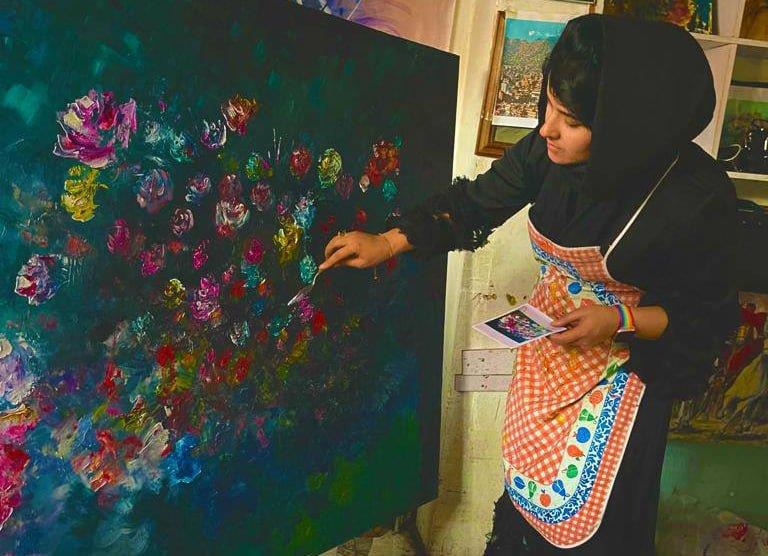(MENAFN- Khaama Press) Afghanistan has witnessed relative growth in the seven art forms in recent decades. Painting, like other art sectors, has attracted attention and attracted its specific enthusiasts. Overall, art, including painting, was significantly influenced after the resurgence of the Taliban, leading to the isolation of artists, particularly female artists. Amid the establishment of the Taliban's interim administration, the music department was removed from Kabul University's College of Fine Arts, and what is now known as the“Islamic Emirate” has taken over with its concept of“composition and song.
Those aware of this“composition and song” do not consider it art due to its alignment with a specific ideology. Consequently, other art forms have also been heavily suppressed in the past two years.
The resurgence of the Taliban greatly affected the seven art forms and forced artists to leave Afghanistan. The mass migration of artists has dealt an irreparable blow to the art scene in Afghanistan. Professors and art experts, including those in painting, have left the country, while some artists who have yet to have the opportunity to leave continue their work underground.
Officials of the Ministry for the Promotion of Virtue and Prevention of Vice of the de facto administration have not concealed their opposition to art and painting. They have expressed their stance on painting through several restrictions, including the banning of depicting living beings in Herat. News of these limitations surfaced in the early months of the interim government's establishment.
The evident enmity of the Taliban towards art has discouraged artists from pursuing their work. Samira Gohari, a painter who predominantly follows the realism style in painting, told Khaama Press News Agency that her motivation to work in this field has diminished after the interim government took control.
Samira added,“Unfortunately, the art of painting has become a sensitive issue, and the Taliban have no positive attitude towards painting, especially when it involves depicting living beings. As a result, the material and spiritual value of painting is deteriorating.” She continues to believe that a significant portion of Afghanistan's citizens lack awareness about the art of painting and cannot grasp its societal significance, which is why art has been silenced.
Fatima, a woman who runs a painting workshop in the 11th district of Kabul, told Khaama Press News Agency ,“The sale of artworks was good during the era of the Republic, and we could earn a reasonable income through this avenue. However, the markets are dull, and there is no buying or selling.”
According to Fatima, during the years of the Republic government, people showed interest in artistic paintings and exchanged them as gifts for varioccasions, like birthdays, work, and weddings. However, with the resurgence of the Taliban administration and the worsening economic conditions, this trend ceased to continue.
She adds that her painting workshop is still active despite the constraints imposed on women's work and life. However, it operates under the strict supervision of the government's morality police, known as the“Promotion of Virtue and Prevention of Vice” forces.
Meanwhile, art reflects the realities of society; Afghan artists cannot express their situations. Just about a month ago, authorities from the“the Promotion of Virtue and Prevention of Vice” department set fire to musical instruments worth thousands of dollars in Herat province, citing the“illegitimacy” of music in Islamic law as the reason.
ShareFacebook Twitter WhatsApp Linkedin Email Print Tumblr Telegram
























Comments
No comment